nlopchantamang.com
Solving the Interactive Podcast Mystery
Aja Frost @ajavuu
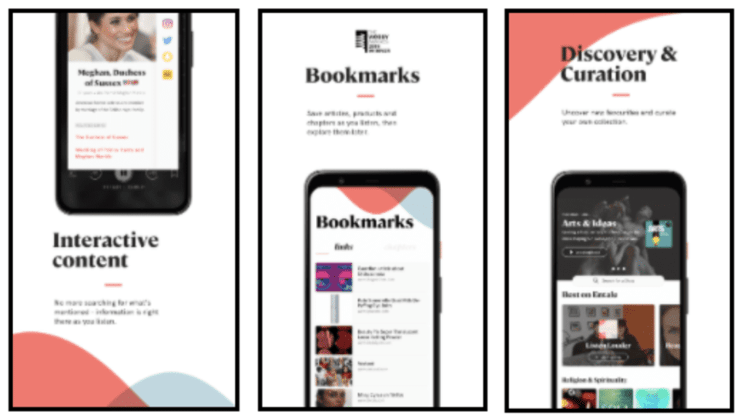
The Signal: You can add “interactive podcasts” to the list of interactive digital experiences that will stick in the post-COVID world. This new genre of media, which blurs the lines between narrative and gaming, was gaining popularity before the pandemic.
Solve is the first-of-its-kind interactive podcast in which listeners solve real-life true crime cases by using social media and other platforms to interview suspects and analyze evidence.
The show debuted as an original Snapchat show in 2018, reaching more than 30m viewers. In 2019 the company launched a podcast and raised $20m in funding. That’s almost as much as podcast network Gimlet Media raised ($28.5m) before it was acquired by Spotify for $200m in 2019.
The Opportunity: This emerging trend in the podcast industry is symptomatic of an increase in demand for more immersive, interactive experiences generally. Remember Satoshi’s Treasure? What about geocaching? And who could forget Pokémon GO?
Interactive Podcast Apps: Entale, which has raised ~$3m to date, is an interactive visual aid app that uses a combination of AI and manual curation to showcase relevant podcast content. Listeners can indulge their curiosity while listening to podcasts by viewing pictures, links, maps, and other content on the app.
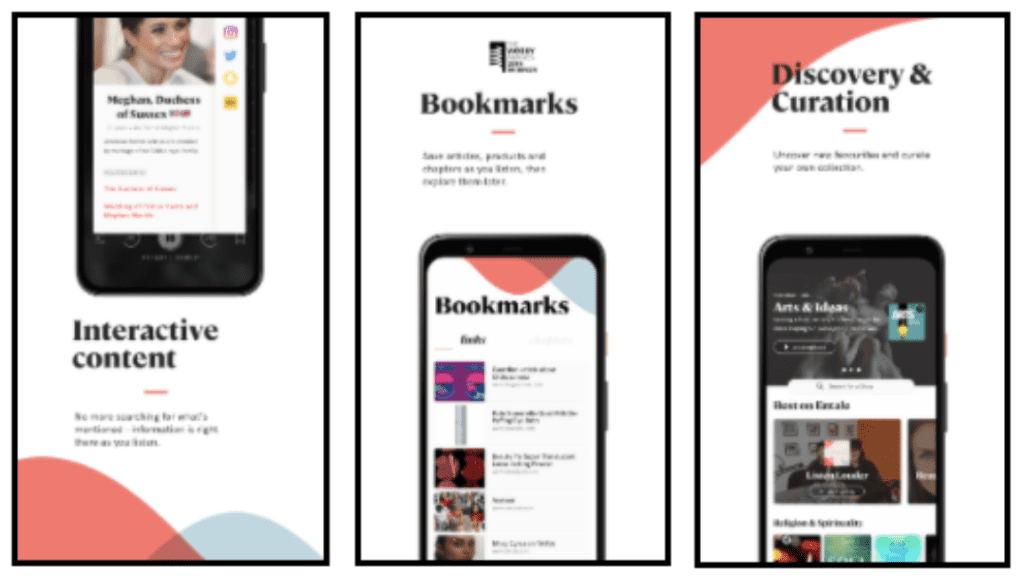
Adori is another app that allows podcasters to include relevant links, images, polls, locations, recommendations, and offer-codes so that they appear on the listener’s screen at the right moment.
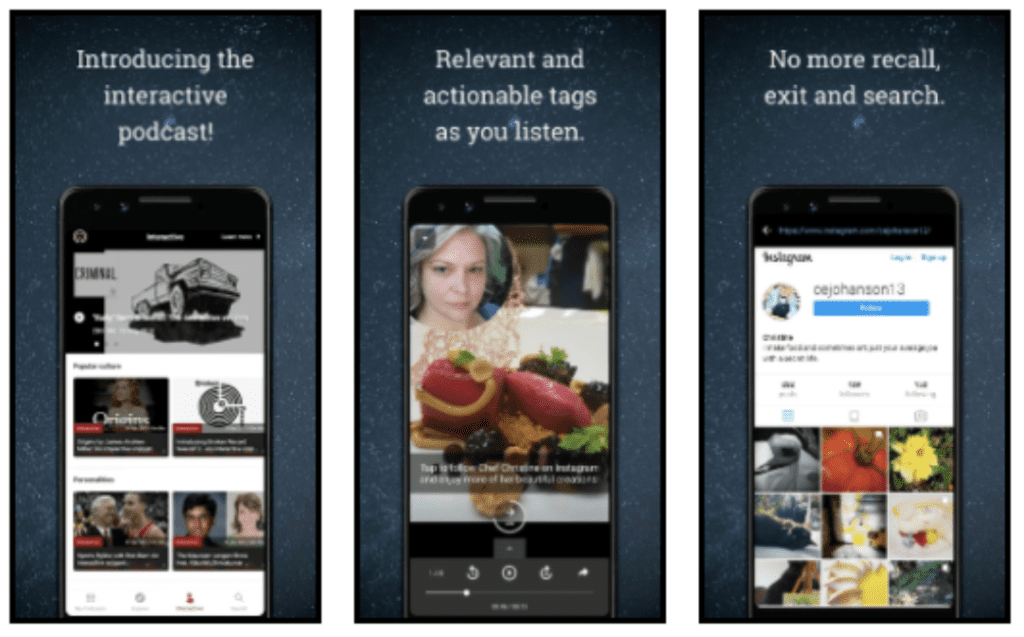
Adori provides customized solutions to specific podcasts — which podcasts get this special treatment depends on users’ requests and recommendations. There is an opportunity to create a more scalable solution, targeted at specific podcast genres, since not all genres are created equal.
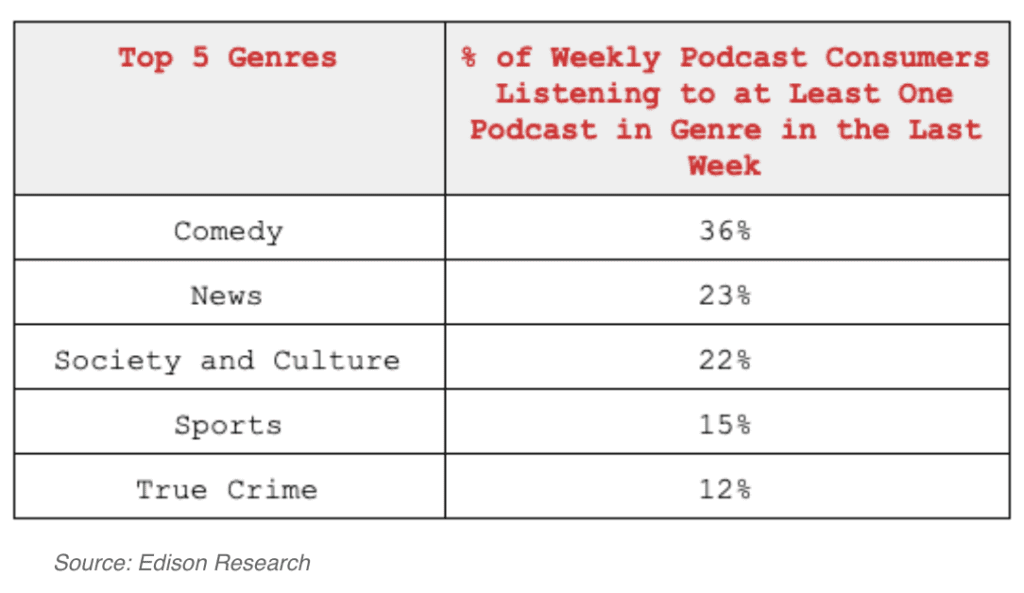
For example, create an app or platform that all comedy podcasts could plug into with features custom-made for the genre, such as a snipping tool that allows listeners to cut and share funny snippets or jokes from an episode. Or, a feature that allows listeners to comment on and tag people in parts of a podcast, similar to the comment functionality in Google Docs.
A feature that enables better ways to take notes would make podcasting and audiobooks far more useful for education than they are currently. Consider, for example, an app that would let you easily transcribe a quote from an audiobook or podcast in the same way that you can highlight a quote in a Kindle book.
Physical Manifestations: Entrepreneurs can leverage the cult-like following that podcasts have to sell podcast-inspired products. One example of a successful podcast-inspired product is Pink Whitney Vodka. Pink Whitney was born when New Amsterdam Vodka sponsored the popular hockey podcast, Spittin’ Chiclets, in October 2018.
The podcast host (Ryan Whitney) mentioned that his preferred way to enjoy vodka was with pink lemonade, spurring listeners to try the drink. In less than a year New Amsterdam had developed Pink Whitney and sold more than 1m bottles, primarily to Spittin’ Chiclets fans. At around $14 per bottle and an assumed industry average gross profit margin (GPM) of ~60%, that works out to ~$8.4m in gross profit.
Launching a product linked to a podcast, or even a popular episode, means launching a product to an already committed and loyal market. There is an opportunity for podcasters and their sponsors to leverage this to create products, not merchandise, that will resonate with their audience.
For example, Studio Ohk explores how podcasts could go beyond audio-only through a project called “Making Podcast Physical,” by imagining what podcasts might look like if they had tangible avatars. For example, each episode of 99% Invisible — a design and architecture show — is reimagined as a folder with relevant information and content:
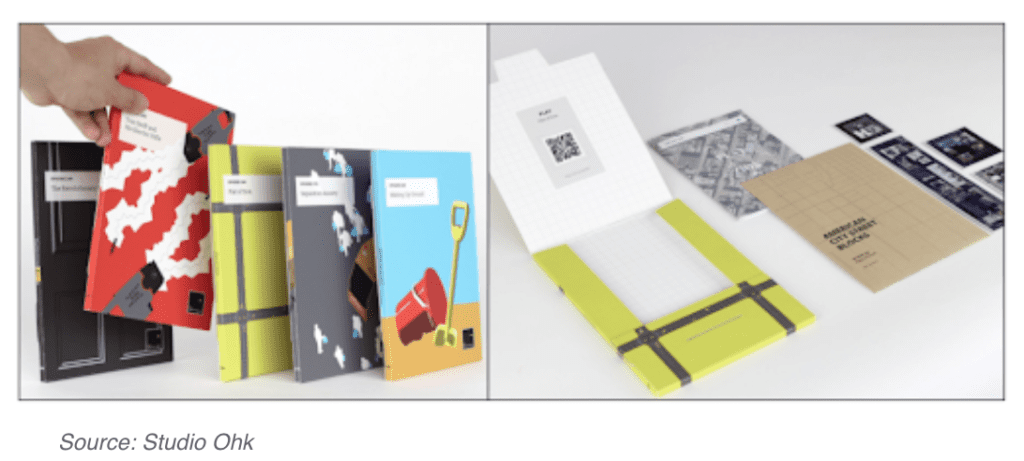
You could work with podcast producers to create one-off physical manifestations and memorabilia, or even combine this trend with the $10B subscription box industry to create and/or curate an assortment of products that tie in to individual episodes.
Imagine if the most popular crime podcast, Crime Junkie — each episode of which averages 1.6m unique listens within a month of release — were to create a monthly subscription box with clues and evidence that ties in to an upcoming episode. While they might not want to do this in-house, a white label subscription box service would allow podcasters to outsource this function. Murder mystery subscription boxes have already proven to be successful, with companies like Hunt A Killer generating more than $2m in monthly revenue since it launched in 2016.
Community Platforms: Hangouts and communities are another way that podcasts are coming to life. The r/podcasts subreddit has more than 1.2m subscribers. Many individual podcasts have Facebook communities with over 100k members each, such as:
- Serial: 443k members
- Freakonomics: 376k members
- Crime Junkie: 133k members
- 99% Invisible: 109k members
Podcast clubs — the book club concept applied to podcasts — are also gaining popularity, with Facebook communities such as:
- The New York Times Podcast Club: 34k members
- Podcasts We Listen To: 23k members
- Podcast Brunch Club: 3k members
Facebook communities for podcast producers to connect with and support each other are also popular, including:
- Podcast Movement Community: 33k members
- She Podcasts: 16k members
- Buzzsprout Podcasting Community: 8.7k members
You could create an app or platform that helps podcasters connect with, manage, and aggregate their Facebook, Dischord, and Slack communities. Or, create a community management course designed specifically for podcasters.
Advertising: One of the biggest factors preventing podcasts from being a force in the advertising world (and therefore limiting advertising revenue for podcasters), is attribution. Marketers are rightfully demanding accountability from media buys. Codes, vanity URLs, and post-purchase surveys are podcasting’s answer to this.
Many companies have sprung up enabling podcasters to easily track their success and reach, including Chartable and Podtrac, which sport a variety of features mimicking those in the digital advertising space to meet the demand for podcast analytics tools:
Search Interest for “Podcast Analytics”

Interactive podcasting apps that allow advertisers to more accurately attribute sales to podcast marketing would be a game-changer for the industry as a whole. UI on mobile that enabled listeners to open up a site from within the podcast app (think of the “Swipe Up” functionality on Instagram) would be an attractive proposition to marketers.
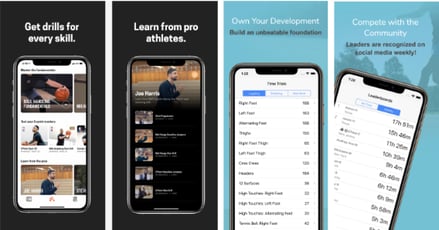
Leave a Comment